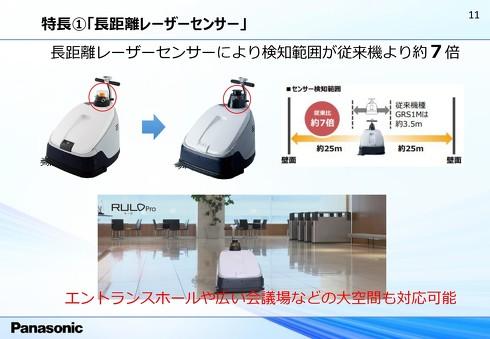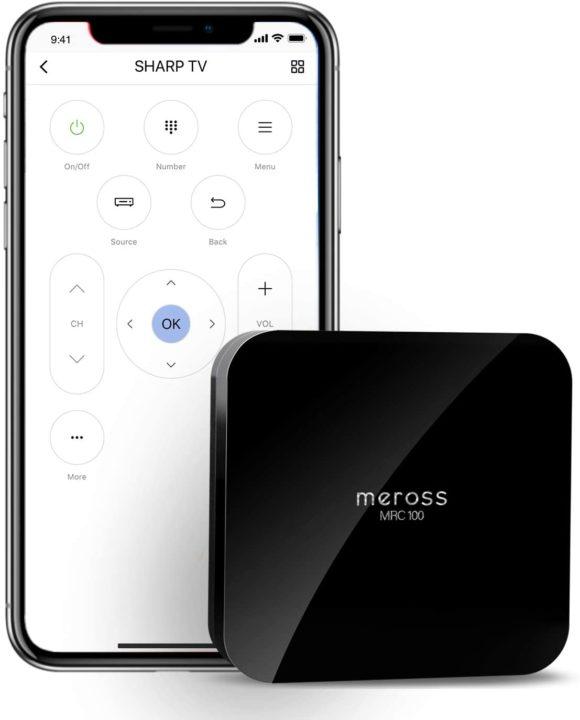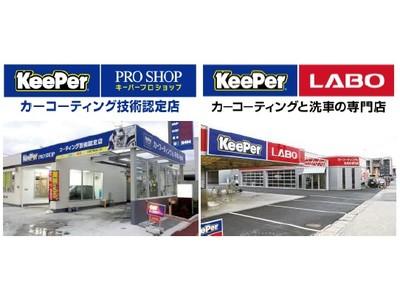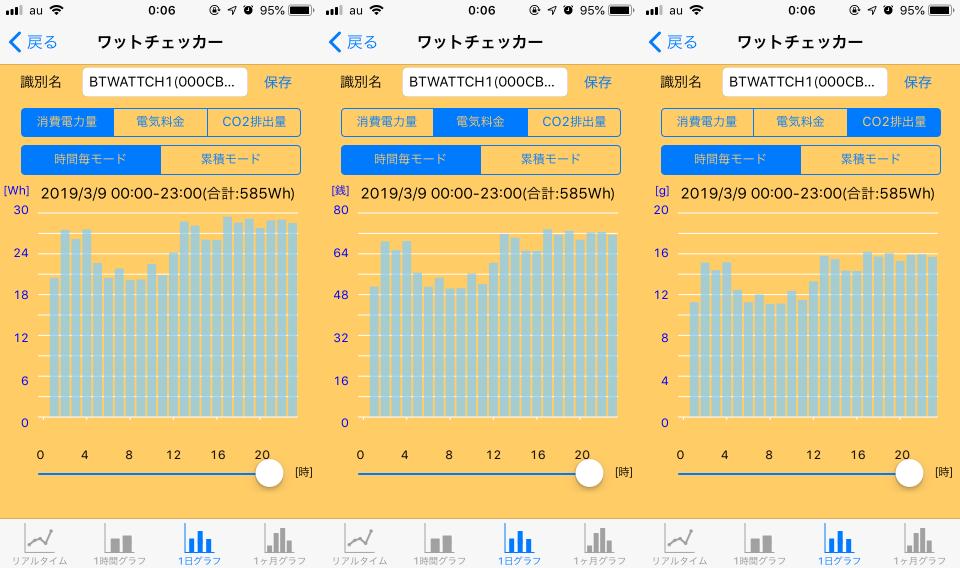Pana's commercial robot vacuum cleaner that increases the detection range by 7 times and can also create automatic driving maps
Appearance of RULO Pro MC-GRS2M [Click to enlarge] Source: Panasonic
On February 22, 2022, Panasonic held a briefing session for the commercial robot vacuum cleaner "RULO Pro MC-GRS2M (hereinafter, GRS2M)" that the company plans to mass-produce from March of the same year. In addition to expanding the detection range of the sensor radar, it has an automatic driving map creation function.Equipped with an automatic driving map creation function [Click to enlarge] Source: Panasonic

Firmly scrape out dust near the wall
The size of GRS2M is 590 x 650 x 730 mm, and the mass of the main body is 26 kg including the battery. Dust collection is done in a paper carton, and the capacity is 5 liters. A 1-liter dust box can also be installed for heavy-duty garbage. Continuous use time is about 150 minutes when fully charged. The GRS2M to be released this time is the second product from the commercial robot vacuum cleaner series "RULO Pro". The first machine, "RULO Pro MC-GRS1M" (hereinafter referred to as "MC-GRS1M"), was released in 2018 and is currently used in office buildings and municipal facilities. MC-GRS1M utilizes some of the know-how that Panasonic has cultivated in the field of home appliances. One of the major features is that it makes it possible to collect dust that has accumulated near the walls. The aircraft detects the distance to the wall surface with four types of sensors: laser sensor, infrared sensor, ultrasonic sensor, and bumper sensor, and while adjusting the position, the side brush scoops out dust near the wall surface. By using a blade-type rotating brush, long hair is less likely to get entangled. In addition, by adopting a paper carton, labor saving is achieved when throwing away garbage, and cleanliness is also improved. Regarding the battery pack, we took in the knowledge of the development of the electrically power assisted vehicle and devised such as attaching a handle for carrying.
Can be used even in a wide space
The MC-GRS2M has two major changes from the first machine. One is that the maximum detection range of LRF (laser range finder) has been expanded by about 7 times. The detection range, which used to be about 3.5m on one side, has been expanded to 25m. This makes it possible to use it in a large space such as an entrance hall or a large conference room. The other is that it has a function to automatically create a map. With MC-GRS1M, it was necessary for the operator to create and register a map of the traveling range in advance, but with MC-GRS2M, this time and effort has been eliminated, and the robot itself scans the traveling range and automatically generates a map. .. It is also possible to specify "no entry area" or "obstacle avoidance area" by placing a dedicated area designation sheet. In addition to this, it also has a timer function to specify the cleaning start time and a function to notify an alert in real time when there is an abnormality while driving. The dust box and rotating brush are antibacterial, so there is a sense of security in terms of hygiene. Panasonic expects that commercial robot vacuum cleaners will grow to a market of about 15 billion yen by 2024 due to labor shortages in the cleaning industry. Regarding future technological development, Mr. Kenji Watanabe, General Manager of Cleaner Business Department, Laundry Cleaner Business Department, Living Appliance Company, Living Appliance Company, said, "Especially for the automatic driving map creation function, it is used for glass etc. due to the specification of using a laser. There are some aspects that are difficult to apply. At the moment, we need to support them manually, but in the future we would like to be able to automate these aspects as well. " ⇒ Click here for other "Robot Development News" articles
MONOist
Last updated: MONOist



![[EV's simple question ③] What is good for KWH, which represents the performance of the battery?What is the difference from AH?-WEB motor magazine](https://website-google-hk.oss-cn-hongkong.aliyuncs.com/drawing/article_results_9/2022/3/9/b2506c4670f9f2cb45ffa076613c6b7d_0.jpeg)
![[How cool is the 10,000 yen range?] 1st: The performance of the "robot vacuum cleaner with water wiping function (19800 yen)" like Rumba is ...](https://website-google-hk.oss-cn-hongkong.aliyuncs.com/drawing/article_results_9/2022/3/25/5251bb14105c2bfd254c68a1386b7047_0.jpeg)

